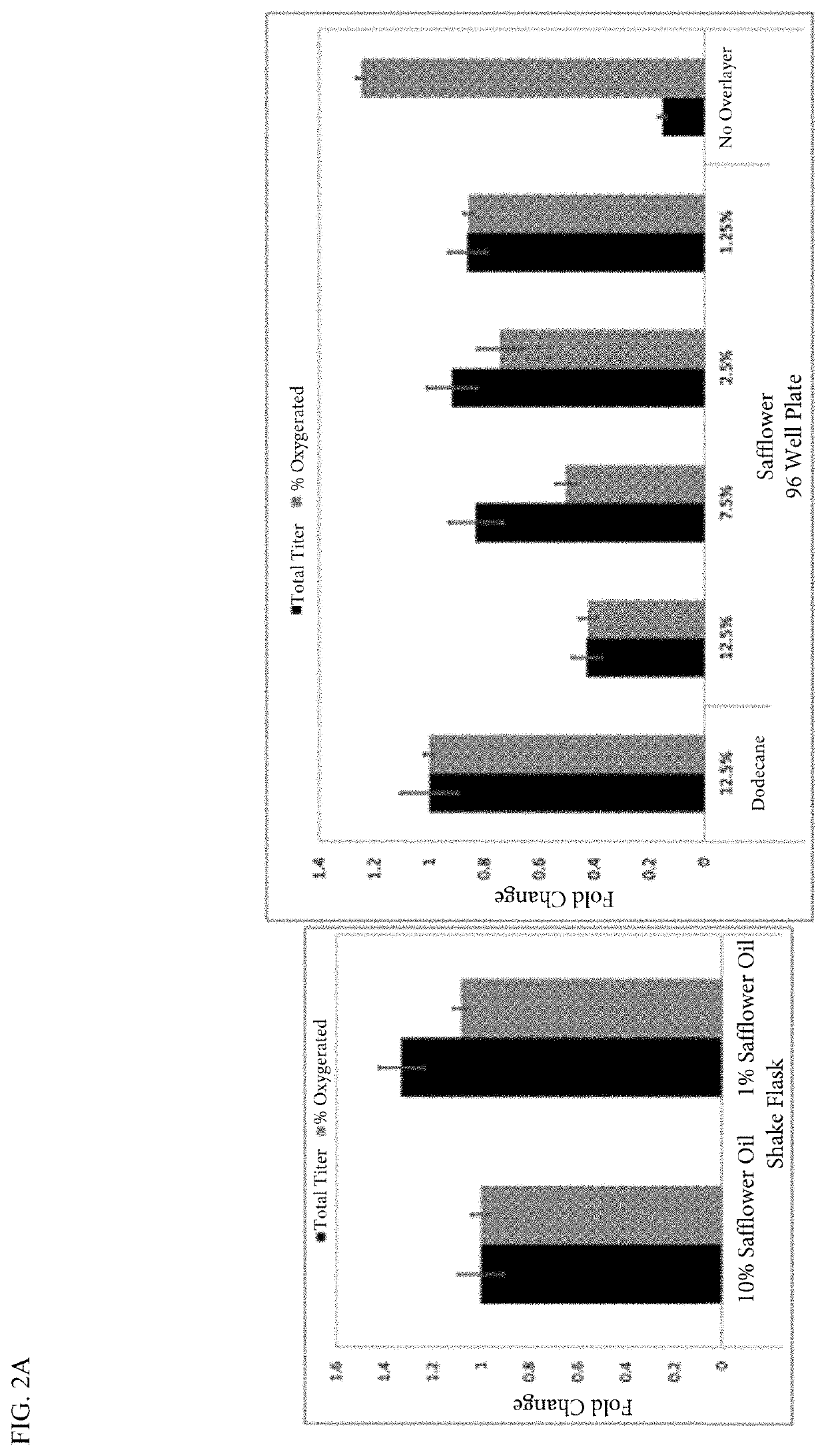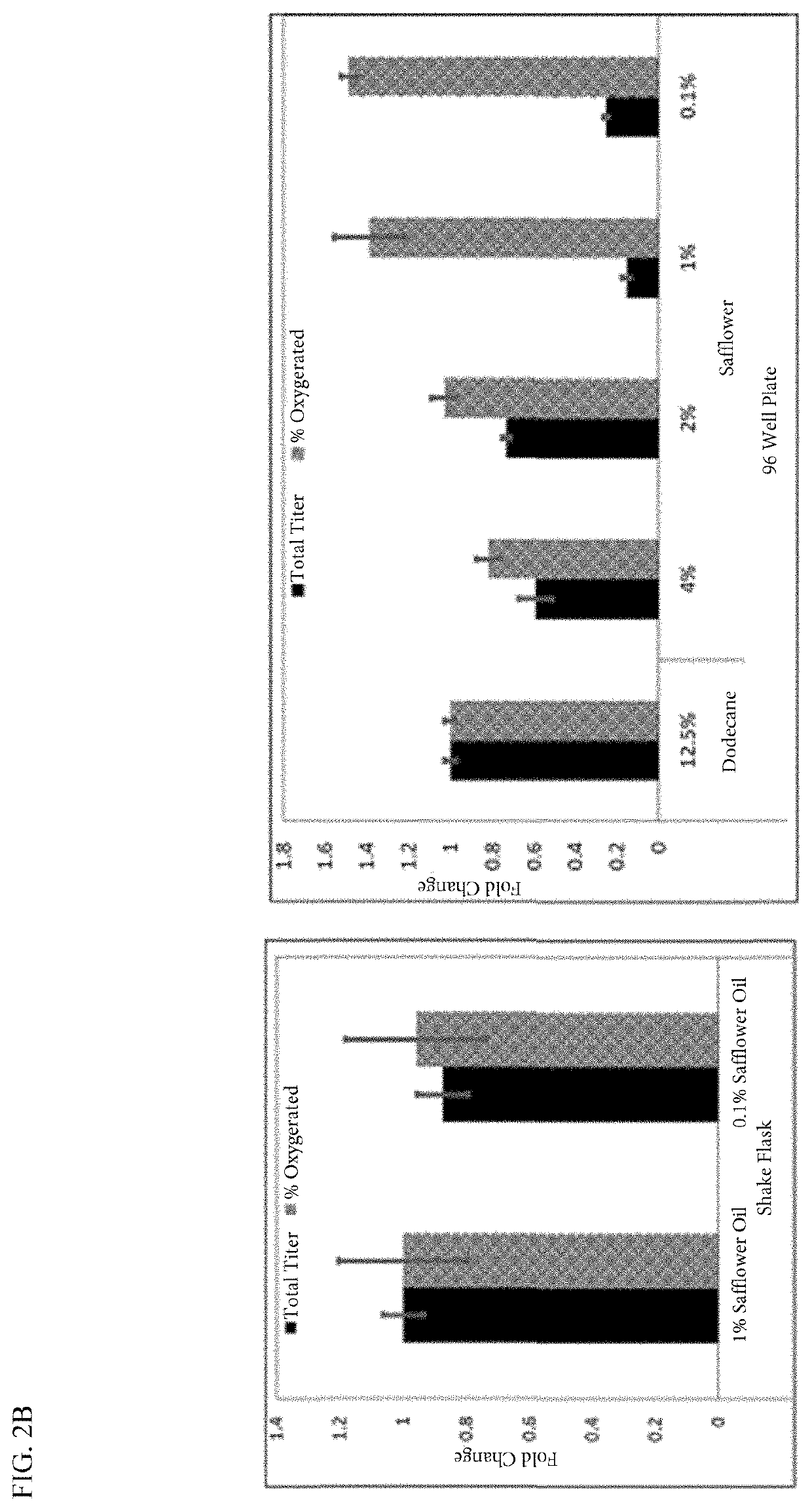Biosynthesis and recovery of secondary metabolites
- Summary
- Abstract
- Description
- Claims
- Application Information
AI Technical Summary
Benefits of technology
Problems solved by technology
Method used
Image
Examples
example 1
Composition of Extractive Phase
[0074]Microbial production of natural products relies on product transport to the extracellular environment. In addition, the extracellular milieu should prevent product degradation, evaporation, air stripping, and provide ease of separation and recovery. Experiments were conducted to determine the effect of different extractive phases on production of natural products in microbial culture, and evaluate whether the extractive phase can provide more than simple sequestration and separation advantages.
[0075]Historically and by convention, a 10% overlayer has been used throughout industrial and academic experiments when conducting microbial fermentations of volatile natural products. We hypothesize that the composition of the fermentation media / extractive phase emulsion have the potential to impact productivity in several ways, beyond simple compound sequestration. We therefore evaluated different oil compositions and percentage with respect to the aqueou...
example 2
Varying Overlayer Percentage
[0080]We hypothesized that, by changing the % extractive phase as well as the corresponding agitation, productivity of the fermentations could be improved with conventional dodecane or safflower extractive phases. The following example shows variation of safflower oil percent extractive phase (with respect to the aqueous phase). In addition, exemplary shake flask experiments were conducted.
[0081]As shown in FIGS. 2A and B, lower safflower oil percentage improves both overall fermentation productivity as well as conversion to oxygenated products under appropriate conditions. This observation holds true for both 96 well plates and shake flasks. These data demonstrate that less overlayer can significantly improve productivity, which indicates there are likely phenomena beyond product capture and prevention of evaporation at play, as one would expect titers to decrease or stay the same as oil % is reduced, if the overlayer was entirely involved in capture and...
example 3
Bioreactor Experiments
[0085]In this Example, we evaluate how well the reduction in safflower oil percentage scales to a bioreactor experiment. We ran 2 Sartorius 2 L fed batch bioreactors with either 1% or 10% safflower oil to determine the effects on cell growth and productivity.
[0086]As shown in FIG. 3, the bioreactor data correlate more with the shake flask data than 96 well plate data. We see an increase in the % oxygenated conversion (bottom, right panel) with an increase in overall titer. The total oxygenated production with 1% safflower extractive phase is significantly higher. Microbial growth is similar in the two conditions.
[0087]Extraction phases, such as safflower oil, and the % with respect to the aqueous phase, are important variables for microbial production of secondary metabolites, such as terpenoids. The composition and % of the extraction phase impacts overall productivity and selectivity for different products.
PUM
 Login to View More
Login to View More Abstract
Description
Claims
Application Information
 Login to View More
Login to View More - R&D
- Intellectual Property
- Life Sciences
- Materials
- Tech Scout
- Unparalleled Data Quality
- Higher Quality Content
- 60% Fewer Hallucinations
Browse by: Latest US Patents, China's latest patents, Technical Efficacy Thesaurus, Application Domain, Technology Topic, Popular Technical Reports.
© 2025 PatSnap. All rights reserved.Legal|Privacy policy|Modern Slavery Act Transparency Statement|Sitemap|About US| Contact US: help@patsnap.com



